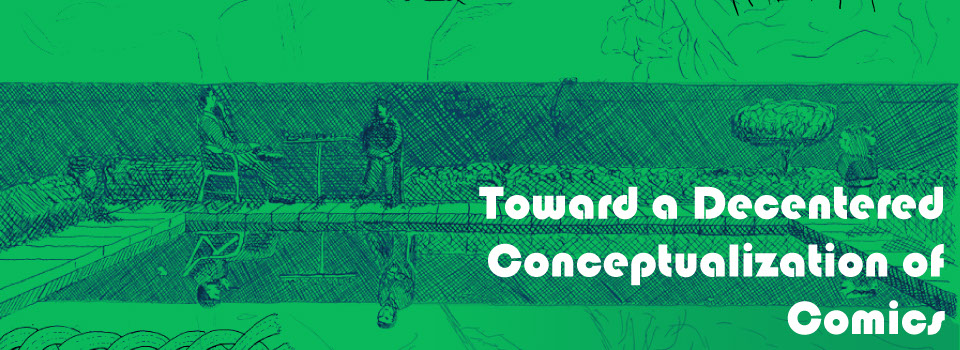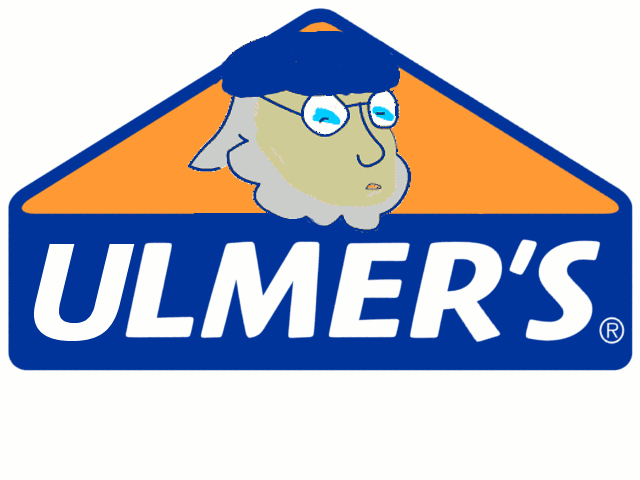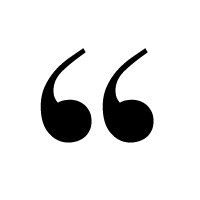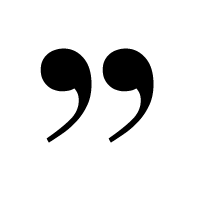
x
Contents
Home
Home
Home

Visual Illiteracy:
Toward a Post-critical Comics

Gregory Ulmer has hovered behind and above this project since its inception. His concept of post-criticism birthed my rhizcomics. He provides the glue (Ulmer’s Glue™) between grammatology and hypermedia. In some ways, the glue exists between books. Applied Grammatology: Post(e)-pedagogy from Jacques Derrida to Joseph Beuys asks the question of how a deconstructive pedagogy would proceed. That question is answered by the rest of Ulmer’s canon: hypermedia.
Ulmer devises new rhetorics and new logics based not upon the word but upon new media. Parataxis becomes the new movement, always “and/and/and” rather than “or.” Concepts from disparate levels of our logocentric hierarchy become parallel. How does he accomplish this? Through a grammatology of hypermedia; said another way, through Derrida. But this is still not enough. Ulmer takes Derrida’s concepts and applies them in new ways. Something old, something new, something borrowed, something true. Sampling the old, folding it in on the current, revealing our now in the currents of the ancients. Ulmer explains deconstruction’s interest in reflexivity and metatextuality and its applicability to criticism:
The mise an abyme [sic] is a reflexive structuration, by means of which a text shows what it is telling, does what it says, displays its own making, reflects its own action. My hypothesis is that a discourse of immanent critique may be constructed for an electronic rhetoric (for use in video, computer, and interactive practice) by combining the mise en abyme with the two compositional modes that have dominated audio-visual texts—montage and mise en scene. The result would be a deconstructive writing, deconstruction as an inventio (rather than as a style of book criticism). (“Grammatology Hypermedia” 4)
Had Ulmer been discussing Lyotard instead of Derrida, he could have substituted the words hyper-reflection and critical poetry. In a sense, Lyotard had begun Ulmer's project. Critical poetry is the response caused by the impossibility realized in hyper-reflection. It points to the nihil outside the text.
Like Lyotard, Ulmer sees a practical route here: post-criticism. According to Ulmer, post-criticism employs the techniques of modernism for the purposes of critique (“Object”). As he further explored the theory over the next few decades, it becamelinked to new media: using the media and techniques of the object being critiqued in forming a critique. The myse en abyme movement makes hyper-reflection patent. In other words, critical poetry must reflect on its own depth. Lyotard refers to this throughout Discourse, Figure as a ninety-degree rotation of the viewer. We move from looking through the painting like a window to looking at the surface of the painting. When we do that, we discover that the surface reflects us.
The notion of metatextuality, of a text that is concerned with its own textuality, its own metaphoricity, belongs not just to hypermedia and postmodern metafiction but to comics. Here we replace the mise en scene/abyme with the mise en panel. “To count as an abyss, resemblance must be literally manifested across the levels of the text. In short, one part of the text must literally (at least in part) as well as metaphorically reproduce the other” (Heuretics 147). This comes very close to McCloud’s description of the interrelationship of image and text in comics. They may reproduce each other or merely converse with each other. Both acts point toward an outside of the text (here used as the woven object that is comics) and toward the question of that outside’s validity, leading us readers to question the gap between, on the one hand, ourselves and the text and, on the other, ourselves and our own metanarratives.
But comics cannot become merely a new type of writing; comics must move beyond. The goal is not to create a hypertextcentrism to answer logocentrism (or logo centrism), but rather to move laterally, to intervene. Writing speaks to comics and comics speak back to writing, each to each. Comics occupy this combination of grammatology and hypermedia but rely upon interventions for their dissemination.

shows its stitches
This image of “Ulmer's glue” drawn by the author in imitation of one of Ulmer's many avatars.
French comics theorist Thierry Groensteen has written a sustained analysis of reflexivity in comics in which he describes five main types of reflexivity: objectification, transvestism, denudation, metaphorization, and egospection (“Bandes désignées”).

Not to follow in the footsteps of the masters, but to seek what they sought. -Basho


